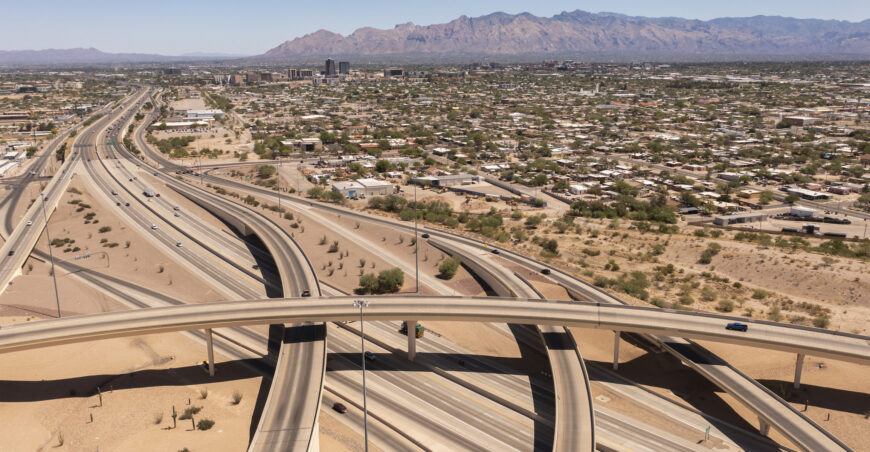Transportation developments have long been recognized as a significant driver of property prices. Whether it’s the construction of new highways, the expansion of public transit systems, or the introduction of bike lanes and pedestrian pathways, improvements in transportation infrastructure can lead to substantial changes in real estate markets. This article explores the various ways transportation developments impact property prices and provides insights into how investors and property owners can capitalize on these changes.
Enhanced Accessibility and Convenience
One of the primary ways transportation developments impact property prices is by enhancing accessibility and convenience. When new roads, bridges, or transit lines are introduced, previously hard-to-reach areas become more accessible. This increased accessibility often leads to a rise in property values as more people willing to move to these areas due to the convenience of commuting.
For example, the introduction of a new subway line or an extension of an existing one can make suburban areas more attractive to city workers. As commuting times decrease, the demand for residential properties in these areas typically increases, driving up prices. Similarly, commercial properties in newly accessible areas can see a surge in value as businesses seek to capitalize on the increased foot traffic and ease of access for customers and employees.
Economic Growth and Development
Transportation infrastructure projects often stimulate economic growth and development in surrounding areas. New transportation hubs, such as train stations or bus terminals, can attract businesses, retail establishments, and other commercial activities. This economic activity, in return, boosts the demand for both residential and commercial properties, leading to higher property prices.
For example, the development of a new airport can transform a relatively undeveloped area into a bustling economic zone. Hotels, restaurants, and shopping centers may spring up to cater to travelers and airport staff, creating a ripple effect that enhances property values in the vicinity. Similarly, improvements in road infrastructure can facilitate the growth of industrial parks and logistics centers, further driving up property prices in the surrounding areas.
Changes in Land Use and Zoning
Transportation developments can also lead to changes in land use and zoning regulations. Governments and planning authorities often reassess land use policies in response to new transportation projects, allowing for higher-density developments or mixed-use projects. These changes can significantly impact property prices, as land becomes more valuable when it can be used for a wider range of purposes.
Impact on Neighborhood Desirability
Transportation developments can also influence the overall desirability of neighborhoods. Improvements in transportation infrastructure can make neighborhoods more attractive to potential buyers and renters, leading to increased demand and higher property prices. Conversely, the construction of large-scale transportation projects, such as highways or rail lines, can sometimes have negative impacts on neighborhood desirability due to noise, pollution, or visual intrusion.
For example, the development of a new bike lane network can enhance the desirability of a neighborhood for environmentally conscious residents. Properties in these areas may see a rise in value as more people seek to live in bike-friendly neighborhoods. On the other hand, the construction of a new highway that cuts through a residential area might lead to a decline in property values due to increased noise and pollution. In such cases, the overall impact on property prices will depend on the balance between improved accessibility and any negative externalities introduced by the transportation project.
Long-Term Sustainability and Property Prices
As sustainability becomes an increasingly important consideration in urban planning, transportation developments that prioritize sustainable modes of transport can have a positive impact on property prices. Investments in public transit, cycling infrastructure, and pedestrian-friendly developments can contribute to the long-term sustainability of urban areas, making them more attractive to residents and investors alike.
Strategies for Investors and Property Owners
Understanding the impact of transportation developments on property prices can help investors and property owners make informed decisions. Here are a few strategies to consider:
- Monitor Upcoming Projects: Keep an eye on planned transportation projects and assess their potential impact on property values in the surrounding areas. Investing early in areas slated for transportation improvements can yield significant returns.
- Diversify Investments: Consider diversifying investments across different property types (residential, commercial, industrial) in areas expected to benefit from transportation developments. This approach can help mitigate risks and maximize returns.
- Engage with Local Authorities: Stay informed about local government plans and zoning changes related to transportation projects. Engaging with local authorities can provide valuable insights and early opportunities for investment.
Transportation developments play a crucial role in shaping property prices. By enhancing accessibility, stimulating economic growth, influencing land use, and improving neighborhood desirability, transportation projects can significantly impact real estate markets. Investors and property owners who understand these dynamics and strategically position themselves can capitalize on the opportunities presented by transportation developments, ultimately achieving higher returns and contributing to the sustainable growth of urban areas.
If you are interested in learning more about the commercial real estate market, feel free to reach out to us at ICRE Investment Team anytime. We’d be happy to help supply you with information on any relevant properties or markets, alongside any connections in lending, investing, brokerage service or consulting that you might need!
















